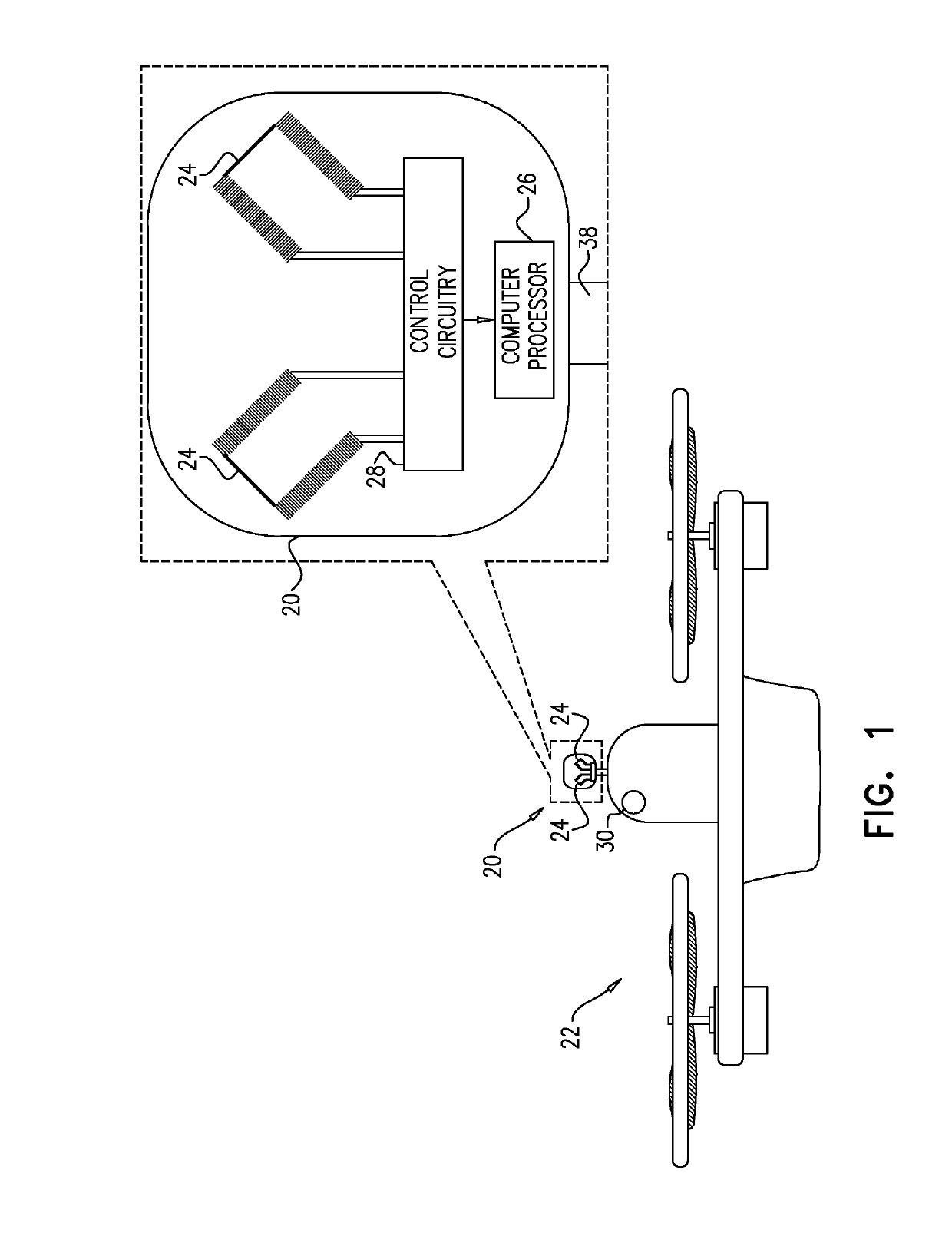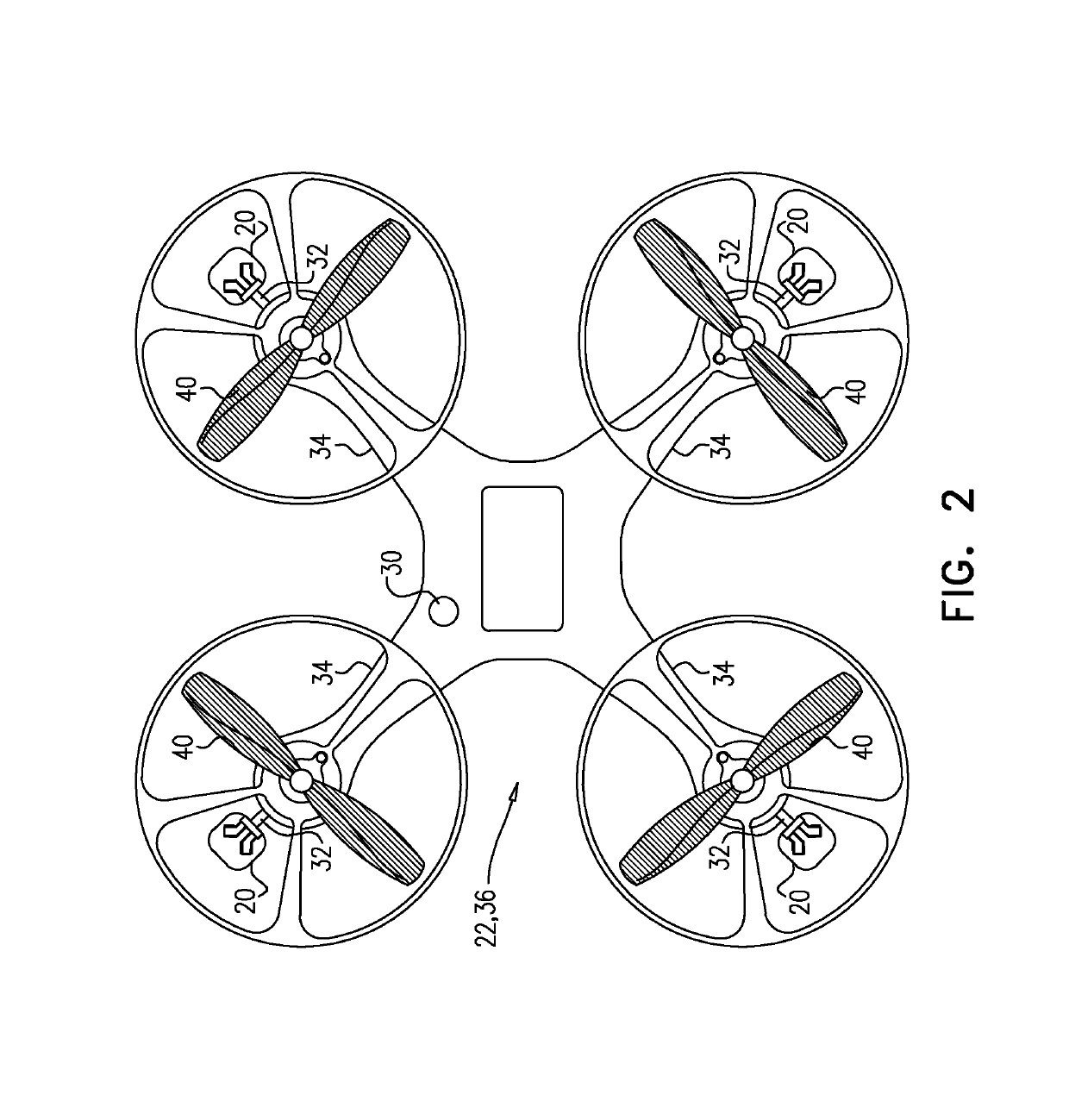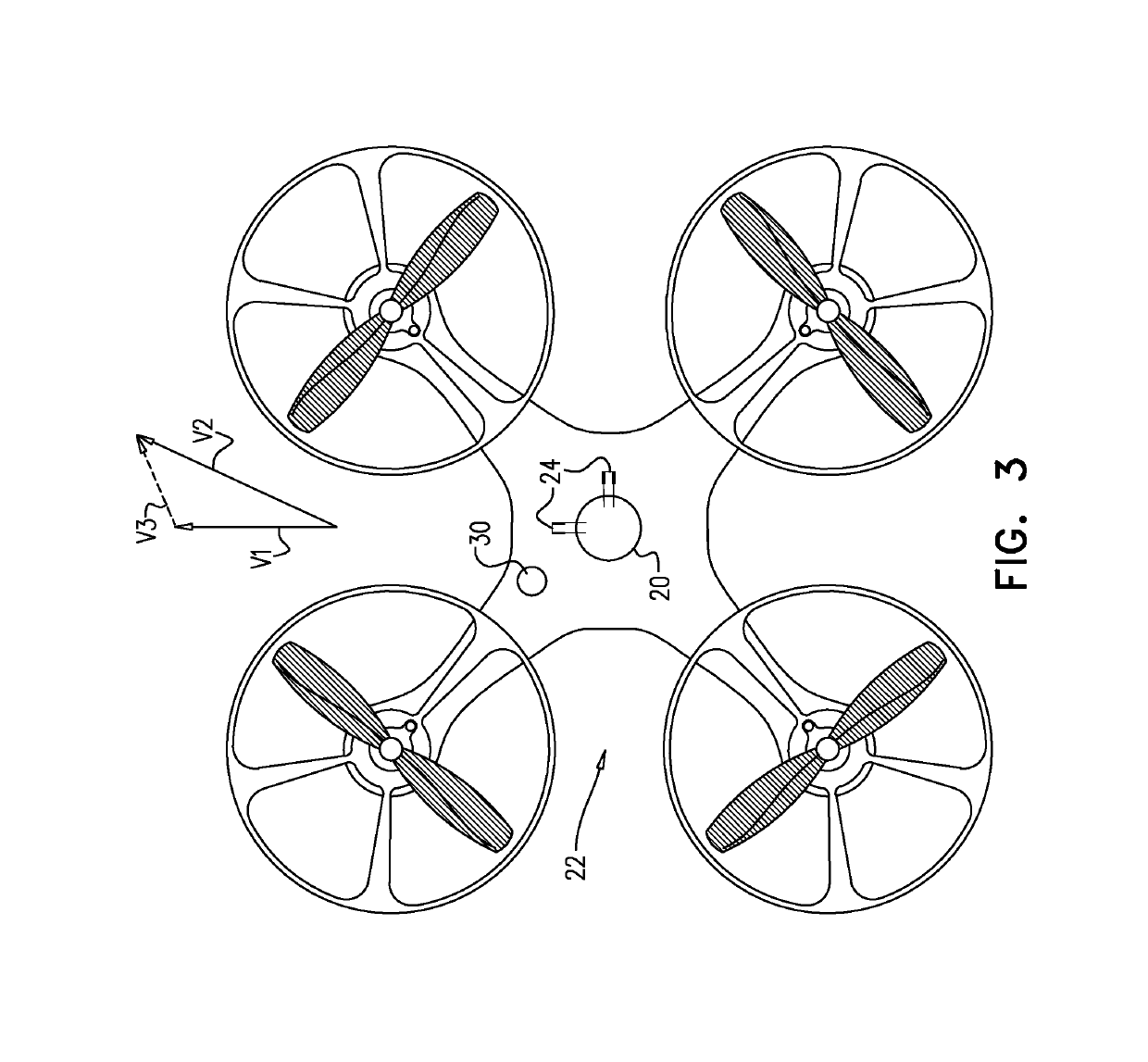Velocity sensing for aircraft
a technology of velocity sensing and aircraft, applied in the direction of vehicle position/course/altitude control, process and machine control, instruments, etc., can solve the problems of reynolds number turbulence, inability of traditional sensors to measure the smallest fluctuations in turbulent flows, and significantly underestimate the scalar rate of dissipation, etc., to enhance the stabilization capability of the control system, reduce power consumption, and improve the effect of robust control system
- Summary
- Abstract
- Description
- Claims
- Application Information
AI Technical Summary
Benefits of technology
Problems solved by technology
Method used
Image
Examples
Embodiment Construction
[0109]Reference is now made to FIG. 1, which is a schematic illustration of a sensor 20 on a flying machine 22, the sensor including a plurality of nanowires 24 and a computer processor 26, in accordance with some applications of the present invention. Sensor 20 is typically mounted on an external surface of flying machine 22, e.g., a fixed-wing aircraft, single rotor aircraft, or multi-rotor aircraft. Each nanowire measures a value of local air velocity relative to flying machine 22. Nanowires 24 are dimensioned for measuring velocity, are capable of measuring high frequency velocity changes, and can be operated using a constant current anemometer (CCA) or a constant temperature anemometer (CTA). Control circuitry 28 in sensor 20 typically operates nanowires 24 using constant temperature anemometry. An active feedback loop keeps each nanowire 24 at a constant temperature, and a current flowing through each nanowire 24 is altered accordingly so as to ensure that each nanowire 24 rem...
PUM
 Login to View More
Login to View More Abstract
Description
Claims
Application Information
 Login to View More
Login to View More - R&D
- Intellectual Property
- Life Sciences
- Materials
- Tech Scout
- Unparalleled Data Quality
- Higher Quality Content
- 60% Fewer Hallucinations
Browse by: Latest US Patents, China's latest patents, Technical Efficacy Thesaurus, Application Domain, Technology Topic, Popular Technical Reports.
© 2025 PatSnap. All rights reserved.Legal|Privacy policy|Modern Slavery Act Transparency Statement|Sitemap|About US| Contact US: help@patsnap.com



